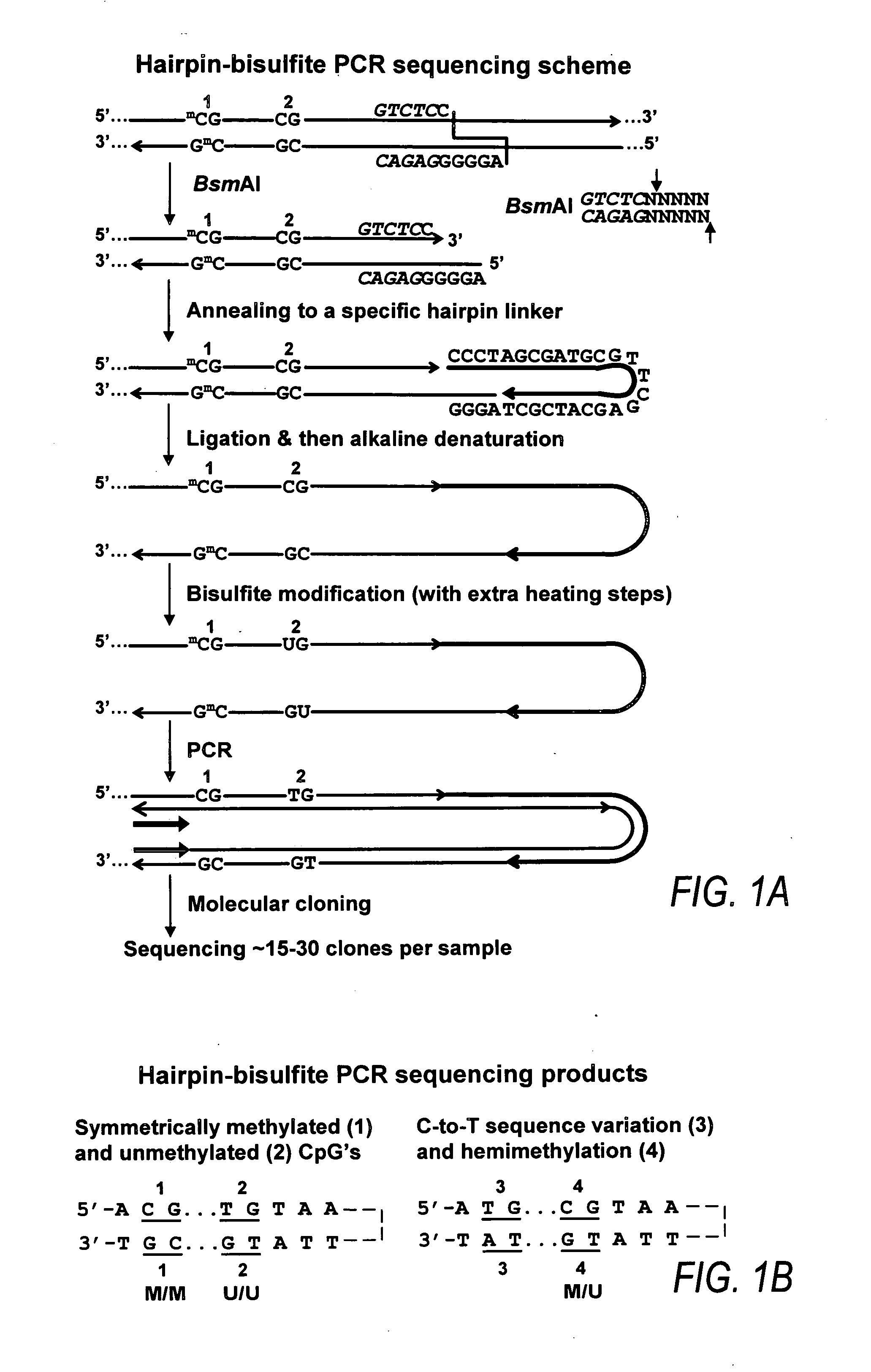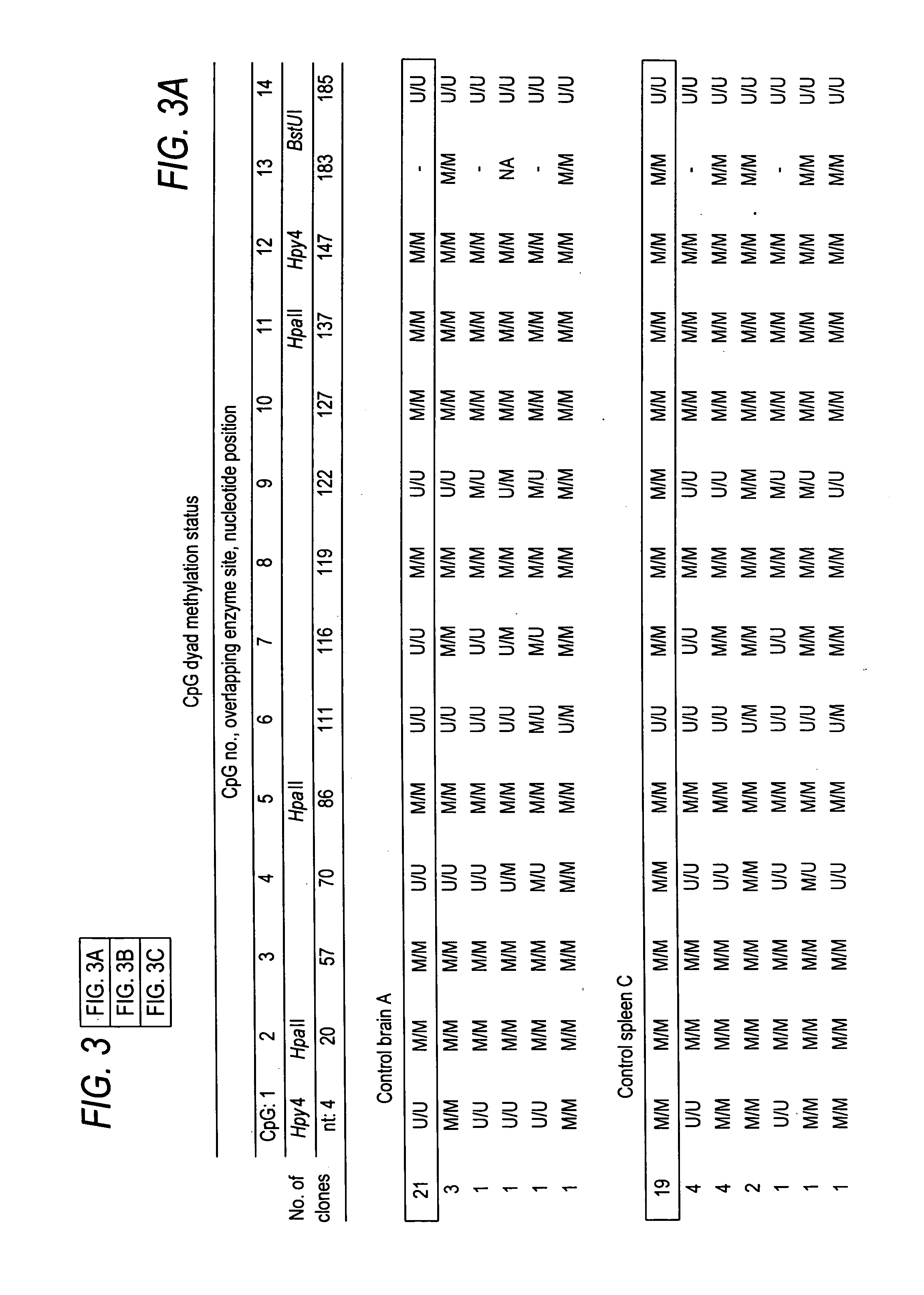Methods for diagnosing cancer based on DNA methylation status in NBL2
a cancer and methylation status technology, applied in the field of cancer detection or diagnosis, can solve the problems of no commercially available diagnostic and/or prognostic assays
- Summary
- Abstract
- Description
- Claims
- Application Information
AI Technical Summary
Benefits of technology
Problems solved by technology
Method used
Image
Examples
example 1
[0143] With IRB approval, primary tumor samples were obtained from surgery patients prior to chemotherapy or radiation therapy. Informed consent was given by all patients or unlinked samples were used. The LCLs were previously described (Ehrlich, et al. (2001). Hum. Mol. Genet., 10, 2917-2931; Gisselsson, et al. (2005). Chromosoma, 114, 118-126; Tuck-Muller, et al. (2000). Cytogenet. Cell Genet., 89, 121-128; GM17900, AG14836, AG14953, and AG15022 from the Coriell Institute). Control somatic tissues were autopsy specimens of trauma victims (individuals A, B, and C, all males of 56, 19, and 68 y, respectively). DNA was purified as previously described (Ehrlich, et al. (2002). Oncogene, 21, 6694-6702).
example 2
[0144] Genomic methylation data were analyzed using R version 2.0.1. Chi-square test statistics were used to assess differences of proportions, and strengths of association for continuous and ordinal variables were evaluated using the standard Pearson's correlation and Kendall's tau statistics, respectively. Where appropriate, p-values were adjusted for multiple tests using the Holm procedure. Classification trees were generated using the RPART library (Breiman, et al. (1984). Classication and Regression Trees. Wadsworth: Belmont, Calif.).
example 3
[0145] NBL2 has a consensus sequence as set forth in SEQ ID NO:2. There are 20 copies of the NBL2 sequence in the GenBank sequence AC018692, BAC clone. The most representative of all the 20 sequences is a repeat that can be amplified using hairpin bisulfite PCR method. For example, BsmAI site is in the hairpin linker and no other BsmAI site is within subregion 1. The average number of restriction enzyme sites in the 20 copies of NBL2 sequences is as follows: AvaI: 3(2.7); BstUI:5(5.5); HhaI: 5(5.4); HpaII:9(9.1); HpyCH4IV:2(3.1); NotI: 1(0.75), the number in the bracket is the average number for the entire 20 copies of the repeat.
[0146] This Example demonstrates the contribution of spreading of methylation or demethylation to the cancer-linked methylation patterns.
[0147] Spreading of de novo methylation along a DNA region can accompany oncogenic transformation, transfection, or viral infection (Toth, et al. (1989). Proc. Natl. Acad. Sci. USA, 86, 3728-3732; Nguyen, et al. (2001). ...
PUM
| Property | Measurement | Unit |
|---|---|---|
| temperature | aaaaa | aaaaa |
| pH | aaaaa | aaaaa |
| angle | aaaaa | aaaaa |
Abstract
Description
Claims
Application Information
 Login to View More
Login to View More - R&D Engineer
- R&D Manager
- IP Professional
- Industry Leading Data Capabilities
- Powerful AI technology
- Patent DNA Extraction
Browse by: Latest US Patents, China's latest patents, Technical Efficacy Thesaurus, Application Domain, Technology Topic, Popular Technical Reports.
© 2024 PatSnap. All rights reserved.Legal|Privacy policy|Modern Slavery Act Transparency Statement|Sitemap|About US| Contact US: help@patsnap.com










